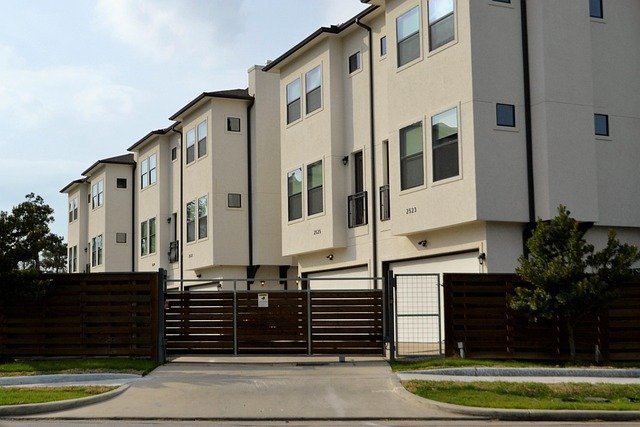Retirement Villages: What to Expect from Prices and Options
As we approach our golden years, the concept of retirement villages becomes increasingly appealing. These purpose-built communities offer a blend of independence and support, tailored to the needs of older adults. But what exactly can you expect when considering a retirement village, particularly in terms of prices and available options? Let's delve into the world of retirement living to help you make an informed decision.

What are retirement villages and how do they work?
Retirement villages are residential communities designed for older adults, typically those aged 55 and above. These communities offer a range of housing options, from independent living units to assisted living apartments, all within a supportive environment. Residents can enjoy their own private living space while having access to shared facilities, social activities, and various levels of care as needed.
The structure of retirement villages can vary, but most operate on either a rental or purchase model. In the rental model, residents pay a regular fee to live in the village, while the purchase model often involves buying a property or a long-term lease within the community. Both models usually include ongoing fees to cover maintenance, services, and amenities.
What types of accommodation are available in retirement villages?
Retirement villages offer a diverse range of accommodation options to suit different preferences and care needs. These typically include:
-
Independent Living Units: Standalone houses or apartments for those who can live independently.
-
Assisted Living Apartments: Units with additional support services for those who need some help with daily tasks.
-
Serviced Apartments: Fully serviced units with meals, cleaning, and personal care provided.
-
Care Homes: On-site facilities offering 24/7 nursing care for those with higher care needs.
The choice of accommodation often depends on the individual’s health, lifestyle preferences, and budget. Many retirement villages offer a continuum of care, allowing residents to transition between different accommodation types as their needs change over time.
What amenities and services can you expect in a retirement village?
Retirement villages are designed to provide a comfortable and engaging lifestyle for their residents. Common amenities and services often include:
-
Communal lounges and dining areas
-
Gardens and outdoor spaces
-
Fitness centers and swimming pools
-
Libraries and computer rooms
-
On-site cafes or restaurants
-
Organized social activities and outings
-
Transportation services
-
24-hour emergency call systems
-
Maintenance and housekeeping services
-
On-site healthcare facilities or visiting healthcare professionals
The range of amenities can vary significantly between villages, so it’s essential to research and compare options to find a community that aligns with your interests and needs.
How much do retirement villages cost?
The cost of living in a retirement village can vary widely depending on factors such as location, accommodation type, and included services. Here’s a general breakdown of the potential costs involved:
-
Entry Fees: For purchase models, these can range from $100,000 to over $1 million, depending on the property and location.
-
Ongoing Fees: Monthly or annual charges for maintenance and services, typically ranging from $300 to $1,000 per month.
-
Exit Fees: Some villages charge a percentage of the sale price when you leave, which can be 20-30% of the property value.
| Cost Type | Low Range | High Range |
|---|---|---|
| Entry Fee | $100,000 | $1,000,000+ |
| Monthly Fee | $300 | $1,000 |
| Exit Fee | 20% of property value | 30% of property value |
Prices, rates, or cost estimates mentioned in this article are based on the latest available information but may change over time. Independent research is advised before making financial decisions.
It’s important to note that costs can vary significantly between different providers and locations. Always request detailed fee structures and seek independent financial advice before making a commitment.
How can you find affordable retirement village options?
Finding an affordable retirement village requires careful research and consideration. Here are some strategies to explore:
-
Look beyond prime locations: Villages in less central areas often offer lower prices.
-
Consider smaller units: Opting for a smaller living space can significantly reduce costs.
-
Explore different payment models: Some villages offer rental options or deferred payment schemes.
-
Check for government assistance: Depending on your location, there may be subsidies or financial aid available for retirement living.
-
Compare multiple villages: Don’t settle for the first option; shop around and compare prices and services.
Remember, affordability isn’t just about the initial cost. Consider the long-term financial implications, including ongoing fees and potential care costs, when evaluating your options.
What should you consider when choosing a retirement village?
Selecting the right retirement village is a significant decision that requires careful consideration. Here are key factors to keep in mind:
-
Location: Proximity to family, friends, and familiar amenities.
-
Care options: Ensure the village can accommodate your current and potential future care needs.
-
Financial model: Understand the costs involved, including entry fees, ongoing charges, and exit fees.
-
Amenities and services: Choose a village that offers activities and facilities that align with your interests.
-
Community atmosphere: Visit the village and interact with residents to get a feel for the community.
-
Contract terms: Carefully review the contract, including rules, fees, and your rights as a resident.
-
Future plans: Consider the village’s plans for expansion or renovation, which could affect your living experience.
-
Reputation: Research the village’s track record and read reviews from current and past residents.
Take your time with this decision, visit multiple villages, and don’t hesitate to ask questions. Your choice of retirement village can significantly impact your quality of life in your later years, so it’s worth investing the effort to find the right fit.
In conclusion, retirement villages offer a unique living solution for older adults, combining independence with community and support. While the costs and options can vary widely, understanding what to expect and carefully considering your needs and preferences will help you make an informed decision. Whether you’re looking for an active community, a supportive environment, or a blend of both, there’s likely a retirement village option that can meet your needs and enhance your retirement years.




